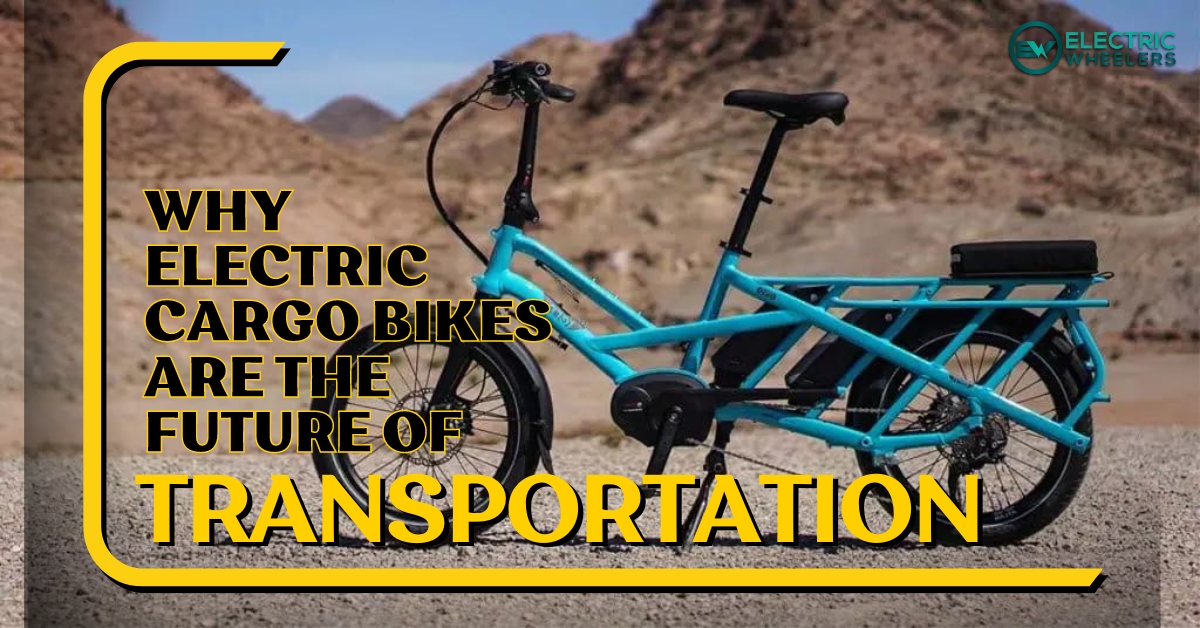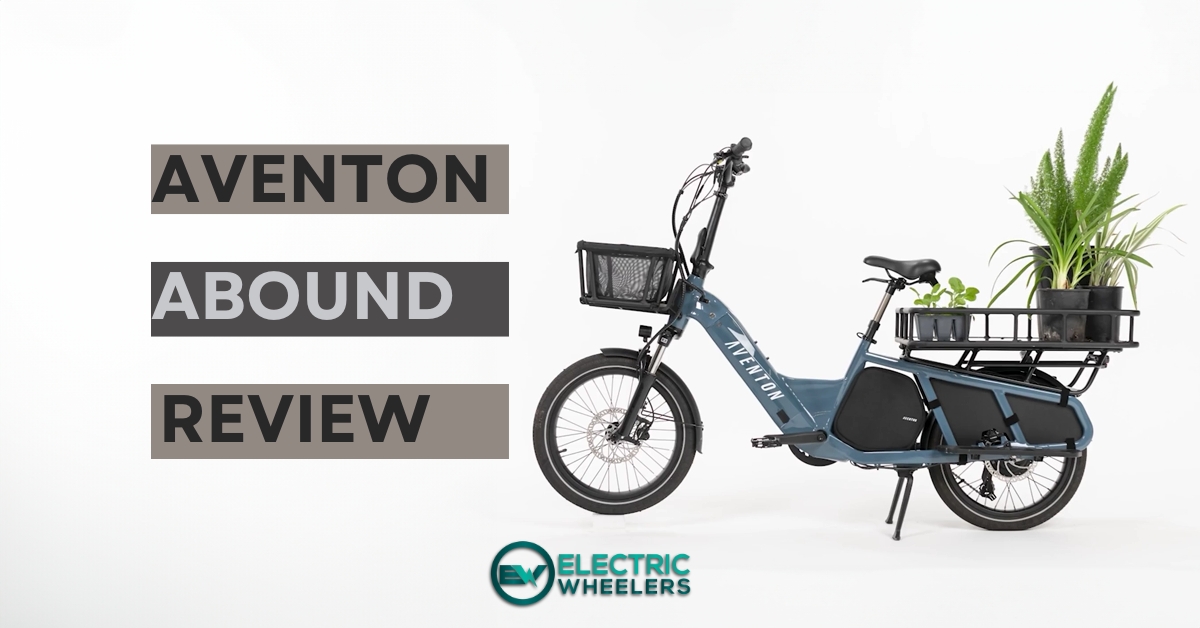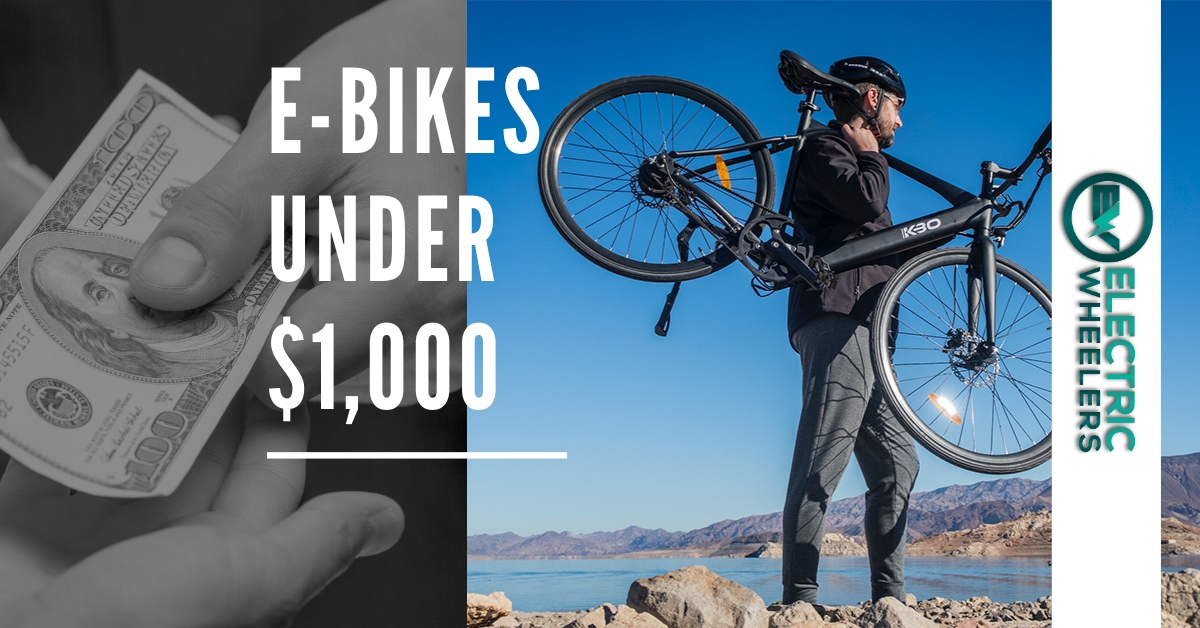Electric Bikes
Electric bicycle (or e-bike, eBike) is one of the most popular personal electric vehicles (PEV). Thanks to the global green turn, electric bikes are getting even more popular.
Even though electric bikes are getting more popular each year, we still occasionally come across the question of what is an e-bike. Also, many people are wondering how exactly an e-bike system works.
What Is An Electric Bike?
An e-bike, which is also known as an electric bike, is a bicycle that has an electric motor integrated into the bike. Additionally, e-bikes have a battery pack that provides the motor with the necessary energy. These 2 are the main components that assist the rider to make pedaling easier.
Some e-bikes have a throttle that you can engage from the handlebar, so you can ride an electric bike without pedaling.
Although the history of e-bikes dates back to the late 19th century, the real electric bike boom started in the 2010s.
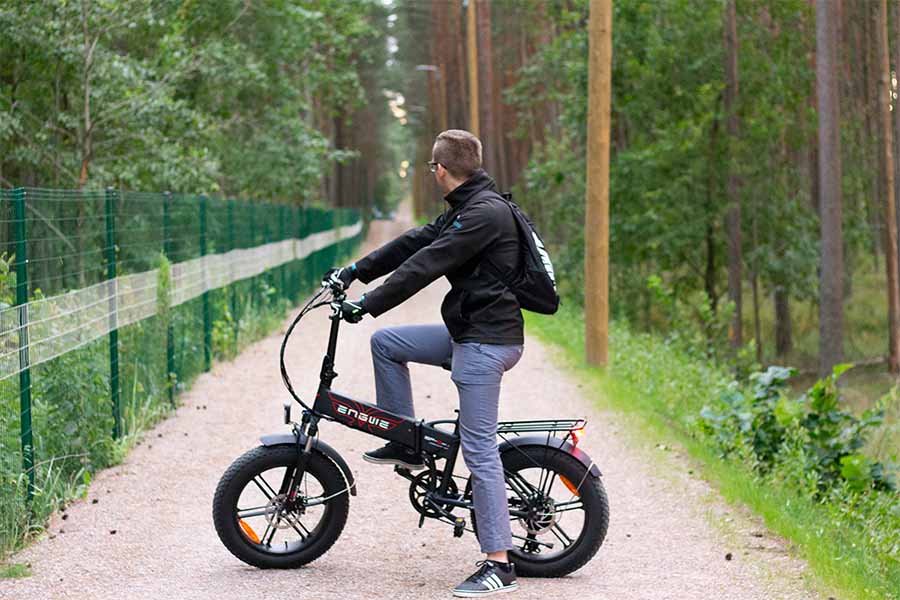
Who are Electric Bikes for?
Electric bikes are built for a wide range of users. Here are some prime examples:
- Commuters: E-bikes will make your daily commute much easier and quicker. You can avoid traffic, save on fuel costs, and don’t need to search for a parking spot.
- Seniors and people with limited mobility: E-bikes are totally safe for seniors. If you have problems pedaling a traditional bike, an e-bike is making cycling possible again.
- Delivery and cargo: Couriers use e-bikes to make their jobs more efficient. Also, cargo bikes can be used to haul kids.
Why eBikes are Trending So Much?

As we can see from the graph above, the interest in electric bikes is seasonal. The peak is always in the summer. However, we can clearly see the trend.
There are several reasons for that:
- Environmental benefits: E-bikes are a green and sustainable means of transportation. They don’t emit pollutants and have a much lower carbon footprint than cars or motorcycles.
- Convenience: Electric bikes provide an easy and convenient way to get around, especially for people with limited mobility and commuters.
- Cost savings: Compared to cars and motorcycles, e-bikes are cheaper and don’t require as much maintenance.
- Advancements in technology: With advancements in battery technology, e-bikes are becoming more efficient and provide a longer range. Also, electric bikes are getting much more affordable than they were before.
What Types Of Electric Bikes Are There?
Just like there are different types of traditional bikes, there are also different types of e-bikes. Here are some of the examples:
Electric Commuter Bikes
Electric commuter bikes are designed for commuting and riding around the city. Commuter bikes usually have a sleek and compact design.
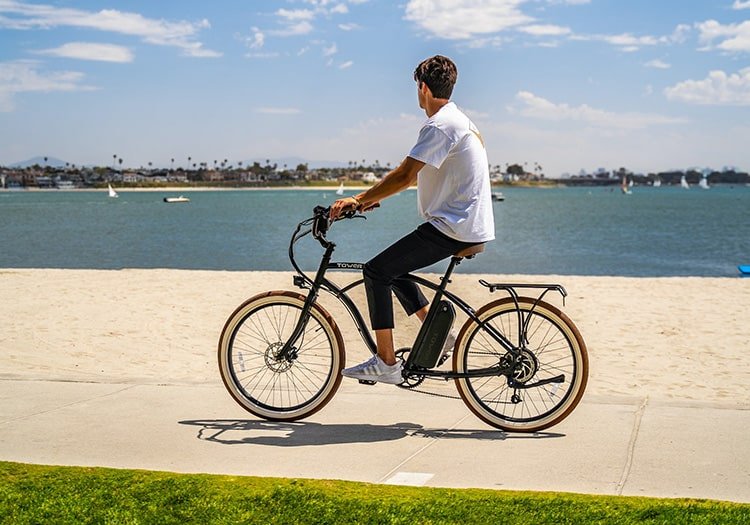
E-commuters in turn are divided into subcategories:
- Electric City Bikes: The most basic e-bikes to get around town. They usually have an upright riding position, rigid frame, and narrow tires.
- Electric Hybrid Bikes: They also have an upright riding position, but may come with a front suspension and a bit wider tires to be able to ride on light gravel as well.
- Electric Fat Bikes: These bikes have wide tires (3″-5″) that allow riding on very different types of terrain.
- Electric Cruiser Bikes: They are designed for comfort and leisurely riding. Cruiser bikes have an upright (or even laid-back) riding position, which allows the rider to sit comfortably and enjoy the scenery.
Electric Performance Bikes

E-performance bikes are designed for sports and recreation. They can also be divided into subcategories:
- Electric Mountain Bikes (e-MTB): Mostly come with a suspension system (hardtail or full suspension). Electric MTB gives you increased access to challenging terrain.
- Electric Road Bikes: Typically class 1 e-bikes (sometimes class 3) with an aggressive riding position. E-road bikes allow you to go for longer rides and help you when climbing hills.
- Electric Gravel Bikes: Looks like an e-road bike but has a little bit wider tires to be able to ride on the gravel as well.
Electric Utility Bikes

In addition to cycling, e-utility bikes have some other necessary functions as well. Here are some examples:
- Electric Folding Bikes: Thanks to the folding frame, folding e-bikes have excellent portability, so the storage of the bike is easier. Also, this bike would fit in the trunk of the car.
- Electric Cargo Bikes: E-cargo bikes are specifically designed for transporting cargo, packages, or other items.
- Electric Hunting Bikes: E-hunting bikes are built to provide assistance for hunting or other outdoor activities. They must be quiet, have off-roading capabilities, and have some cargo capacity.
Check out our collection of the best electric bikes in different categories.
Differences Between an E-Bike and Traditional Bike
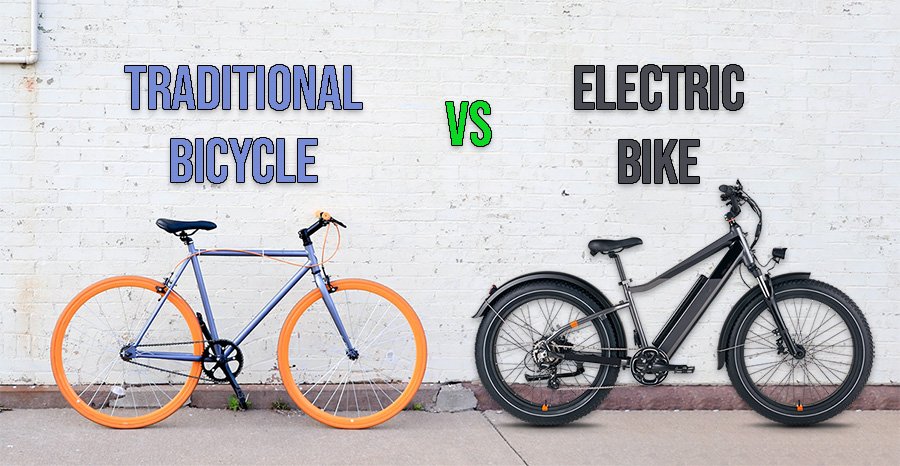
The main difference between an e-bike and a traditional bike is the presence of an electric motor and battery. In addition to that, e-bikes have a controller and sensors that regulate the work of the motor and battery.
Other key differences between conventional bikes and electric bikes are:
- E-bikes reach higher speeds than traditional bikes.
- Usually, electric bikes are heavier due to the added weight of the motor and battery.
- Electric bikes tend to be more expensive due to the cost of electric components.
- Depending on the country, e-bikes may have different legal requirements than traditional bikes, such as registration, insurance, and speed limits.
How Does an E-Bike Work
Now we know what distinguishes a regular bike from an electric bike. Let’s discuss what are the main components of an electric bike and how each component works.
Motor
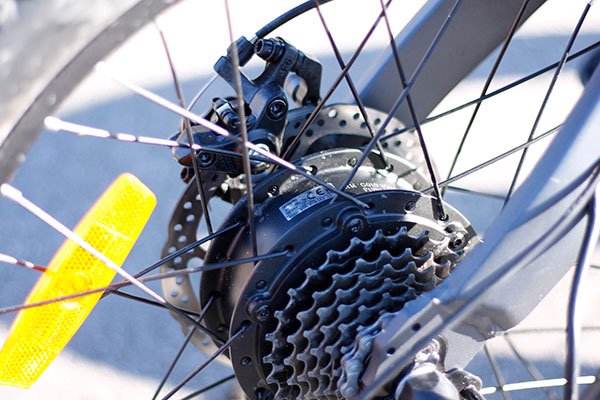
The motor is the most important component of an electric bike. It is responsible for providing the power, which moves the bike forward.
In general, there are 2 types of motors used in e-bikes.
Hub motors are located in the wheel hub and mid-drive motors are located on top of the pedals in the middle of the bike.
Battery
The motor gets its energy from a battery. There are different locations where you can mount an e-bike battery.
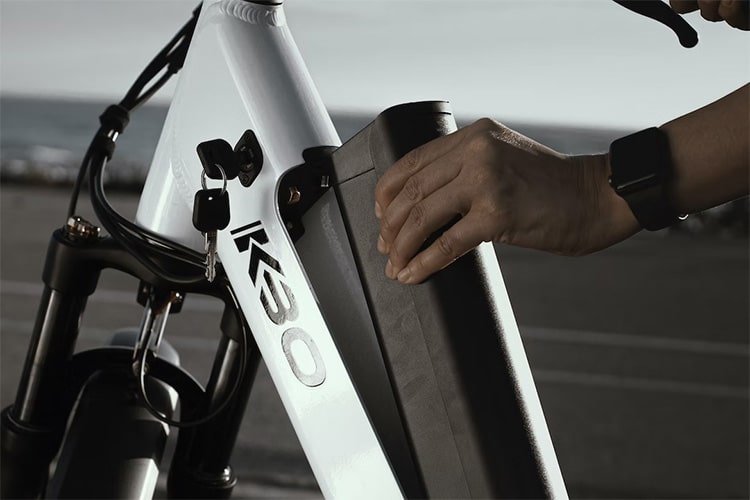
Sometimes, the battery is hidden inside the frame. You can also find the battery back on the rear rack or behind the saddle next to the seat tube.
The most common battery type for ebikes is a lithium-ion battery.
Controller
The e-bike controller is the brain of an electric bike. It manages the power flow from the battery to the motor.
Also, it is the controller’s job to regulate the speed and torque of the motor. For controlling the torque, there are a couple of sensors in place.
There are 2 types of sensors: cadence and torque sensors.
The sensor recognizes when you start pedaling or engage a throttle and then activates the motor assistance.
Display
The display is the interface between the rider and the e-bike. You can see important information from the display like speed, speed mode, remaining battery, and traveled distance.
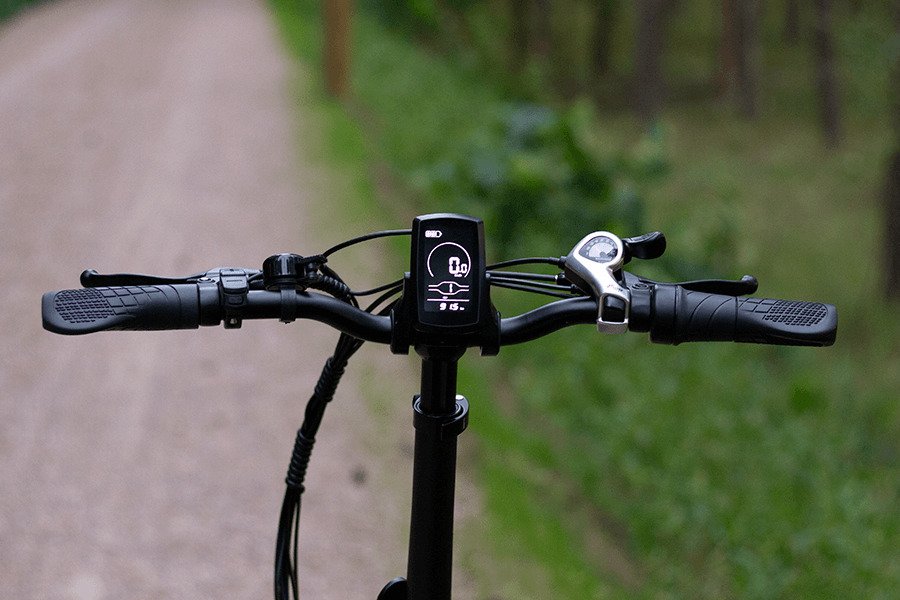
Although most electric bikes have a display, not all of them have one.
While electric bikes can not function without a motor, battery, or controller, it is possible to have no display.
How Does an E-Bike System Work?
All components mentioned above work together to make an electric bike function properly. Simply said, an e-bike works like this:
- The rider starts pedaling or engaging a throttle
- The sensor sends the signal to the controller
- The controller activates the motor to provide additional power
- The controller also regulates the power flow from the battery to the motor
- The display provides important information about riding statistics
- If the rider stops pedaling or doesn’t push the throttle anymore, sensors send the signal to the controller to stop the motor.
Our Experience With Electric Bikes
At the heart of our passion for electric bikes lies years of hands-on experience, countless miles ridden, and an unwavering commitment to sharing our knowledge with the community. Here’s a glimpse into our journey:
- Electric Bike Reviews: Over the years, we’ve had the privilege of testing and reviewing a myriad of e-bikes. From the latest models to the classics, our comprehensive electric bike reviews provide insights that are both honest and informative. We’ve ridden them through city streets, mountain trails, and coastal roads to give you a real-world perspective.
- E-Bike Brands: Our exposure to a wide range of e-bike brands has given us a unique perspective on the industry’s evolution. From established giants to emerging innovators, we’ve seen the spectrum of quality and innovation that each brand brings to the table.
- Choosing an E-Bike: With the plethora of options available, choosing an e-bike can be overwhelming. Drawing from our extensive experience, we’ve crafted guides and resources to help you make informed decisions, ensuring that you find the perfect ride tailored to your needs.
- How to Ride an Electric Bike: Riding an e-bike might seem intuitive, but there are nuances to ensure a safe and enjoyable experience. Our tutorials on how to ride an electric bike cover everything from the basics to advanced techniques, ensuring you’re well-equipped for any adventure.
- Electric Bike Maintenance Tips: Just like any vehicle, e-bikes require regular upkeep. Our electric bike maintenance tips are curated from years of hands-on experience, ensuring your e-bike remains in peak condition for years to come.
- Pros and Cons of E-Bikes: While we’re avid proponents of e-bikes, we believe in presenting a balanced view. Our detailed analysis of the pros and cons of electric bikes offers a holistic understanding, helping you weigh the benefits against the challenges.

Our journey with electric bikes is more than just a passion—it’s a commitment to ensuring that our readers have access to the best information and resources.
Whether you’re a seasoned rider or just starting out, Electric Wheelers is here to guide you every pedal of the way.



